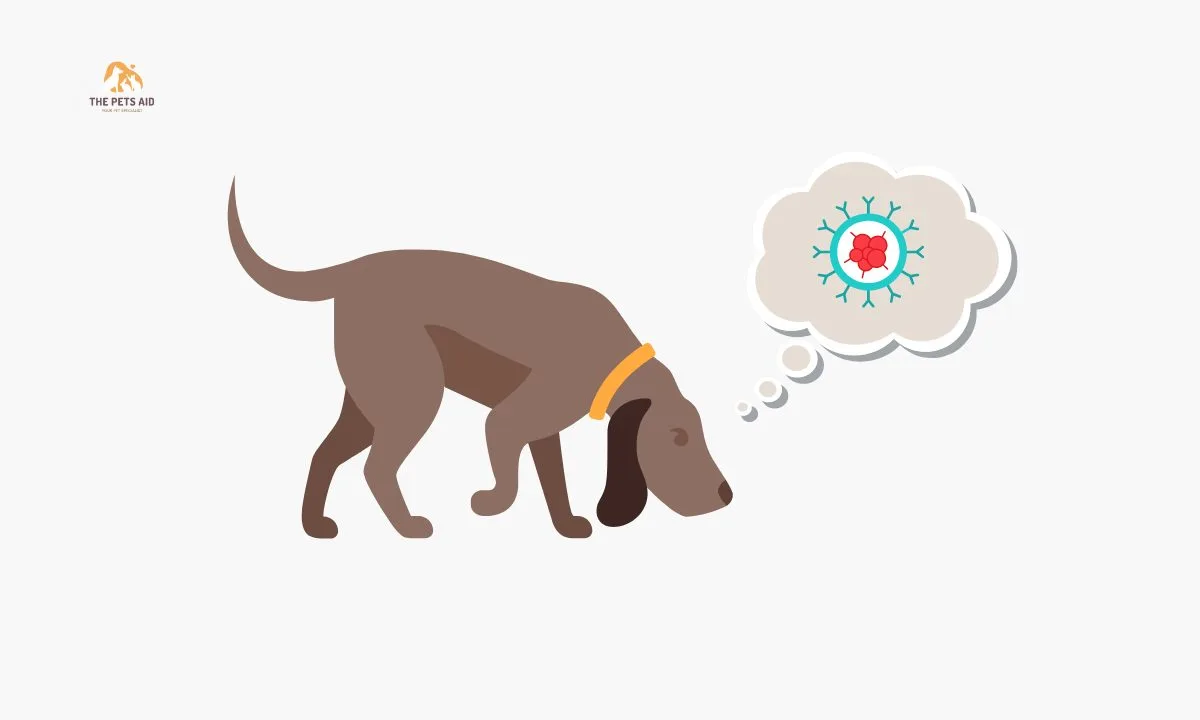There’s a great story about dogs with an amazing talent: they can sense cancer. Janice Wolfe, founder and CEO of United K9 Professionals, showcases the incredible skills of dogs like Wyatt, a Rhodesian, who can identify cancerous tumors through their keen sense of smell.
This story unveils the powerful connection between humans and their canine companions, showcasing how these four-legged friends are not just our loyal companions but potentially life-saving allies.

Highlights:
- Dogs, like Wyatt, can sniff out cancer by detecting specific smells emitted by tumors.
- Dogs observe us closely, creating a sixth sense to notice changes in our health before we do.
- The dog’s behavior changed when his owner had cancer, showcasing how dogs can signal health issues through their actions.
- Dogs can be trained to detect various medical conditions, providing early warnings and transforming lives.
- Breeds, like retrievers and German Shepherds, are trained to use their sense of smell to detect cancer, offering a potential breakthrough in early detection.
Can Dogs Sniff Out Cancer?
Yes, dogs have shown an impressive ability to sniff out cancer by detecting the tiny volatile chemicals emitted by cancerous tumors, offering a potential breakthrough in early detection and healthcare.
Unseen Connection
Dogs, as Janice Wolfe points out, watch us in a way that no other animal does. Their constant observation and ability to read our body language create an uncanny sixth sense. This keen observation forms the basis of their incredible abilities, as they sense changes in our health long before we do.
Max’s Tale of Detectioneta
Maureen Burns’ red collie cross, Max, provides a moving example of this exceptional dog skill. In 2008, Maureen noticed a significant change in Max’s behavior – he seemed unhappy and distressed.
Max, typically full of energy, became lethargic and avoided Maureen. Astonishingly, Max even nudged her breast with his nose, a behavior that raised concerns.
Despite a clear mammogram, Maureen decided to investigate further due to Max’s unusual behavior. Her intuition proved right when a surgical biopsy revealed a cancerous lump. Max’s demeanor changed instantly after Maureen’s successful treatment, showcasing the profound bond between humans and dogs.
The Science Behind Dogs Cancer Detection
Research reveals that dogs like Max can smell the tiny volatile chemicals that cancerous tumors emit. While most dogs possess this ability, they often go unnoticed.
With proper training, dogs can accurately identify cancerous patients from a selection of urine samples. This remarkable skill is not limited to cancer detection; dogs can also be trained to detect early warning signals for severe allergic reactions, epileptic fits, and narcolepsy.
Transforming Lives
The impact of these cancer-detecting dogs extends far beyond individual stories. They are being trained to assist individuals with various medical conditions, such as diabetes.
By sensing changes in blood sugar levels, these remarkable dogs provide early warnings, potentially preventing serious health complications.
Can dogs smell cancer in other dogs?
Yes, research suggests that dogs can be trained to sniff out cancer in other dogs. Dogs’ remarkable sense of smell, which has been utilized for various purposes throughout history, including hunting, search and rescue, and detecting medical conditions in humans, can also be employed to identify cancer in their canine counterparts.
Dogs’ capacity to detect specific scent chemicals linked to cancerous tumors is the basis for the theory that they may identify cancer in other dogs.
In the same way they can detect cancer in people by sniffing volatile organic chemicals released by tumors, dogs may apply their olfactory prowess to discover similar alterations in the scent of other dogs with cancer.
Trained dogs have shown promising results in detecting various types of cancer in other dogs, including through urine and breath samples.
Can a dog get cancer from licking other dogs tumor?
Yes, a dog can potentially get cancer from licking another dog’s tumor. The cancer in question is Transmissible Venereal Tumor (TVT), and direct contact with a dog with TVT, including licking the tumor-affected areas, is listed as one of the common causes.
What do dogs do when they smell cancer in humans?

When dogs smell cancer in humans, they can detect the unique volatile chemicals emitted by cancerous tumors. Some dogs, with proper training, can accurately identify these scents.
In practical terms, they may exhibit changes in behavior, such as nudging or showing attention to a specific area of the body where cancer is present. It allows them to serve as potential early warning systems, prompting individuals to seek medical attention for further diagnosis and treatment.
Can dogs smell cancer on your breath?
Yes, dogs can detect cancer by smelling the volatile chemicals emitted by cancerous tumors, even in a person’s breath. Their extraordinary sense of smell allows them to identify subtle changes that may go unnoticed through traditional medical tests.
Can Dogs Detect Cancer by Licking?
Yes, dogs can potentially detect cancer by licking. Roswell Park postdoctoral fellow, Dr. Stenzel notes, In case studies, dogs have been observed persistently sniffing, licking, and nipping at melanoma lesions on their owners’ skin, even through clothing. This behavior has prompted owners to identify the cancerous sites, leading them to seek medical care from clinicians.
How Do Dogs Act When They Smell Breast Cancer?
Dogs exhibit specific behaviors when they detect the scent of breast cancer, and their training plays a crucial role in these reactions. Based on the provided information, here’s a breakdown of how dogs typically act when they smell breast cancer:
- Sitting or Laying Down: Dogs trained to detect cancerous scents, particularly in breast cancer cases, often exhibit a distinctive behavior by sitting or lying in front of samples containing cancerous odors. This behavior is a clear and easily recognizable indication for their handlers that they have identified a positive sample.
- Ignoring Negative Samples: The training process involves teaching dogs to differentiate between samples that contain cancerous scents and those that do not. Dogs are trained to ignore negative samples, focusing solely on identifying the specific scent associated with breast cancer. This selective response enhances the accuracy of their detection abilities.
- Reward System: Positive reinforcement is a critical element of training dogs for cancer detection. When a dog correctly identifies a sample containing cancerous scents, they are rewarded using a clicker and food treats. This reward system helps reinforce the connection between the specific scent and the positive behavior, encouraging dogs to exhibit the desired response consistently.
- Accurate Detection Across Stages: Researchers have found that dogs trained to detect breast cancer can accurately spot the disease across various stages, from very early to late stages. This highlights the incredible sensitivity of a dog’s olfactory system, allowing them to identify the volatile chemicals associated with cancerous tumors at different development points.
So, dogs trained to detect breast cancer act in a purposeful and trainable manner. Their ability to sit or lay down in front of positive samples, ignore negative samples, and respond to a reward system demonstrates the effectiveness of their training.
Can Untrained Dogs Smell Cancer?
Yes, untrained dogs have the natural ability to smell cancer. Dogs can detect the scent of cancerous tumors through their highly sensitive sense of smell.
However, with specific training, their owners may be aware of their dogs exhibiting this skill. Training can enhance a dog’s ability to accurately identify and signal cancer’s presence.
What breed of dog can smell cancer?
Researchers at the University of Pennsylvania’s Working Dog Center are training a team of retrievers and Dutch or German Shepherds to use their extremely sensitive noses to sniff out ovarian cancer.
Therefore, retrievers and Dutch or German Shepherds are the breeds of dogs trained to smell cancer, particularly ovarian cancer.
Conclusion
The story of dogs like Wyatt and Max exemplifies the incredible bond between humans and their furry companions. Their ability to detect cancer and other health conditions showcases the untapped potential within the animal kingdom.
As science continues to explore and harness the capabilities of our four-legged friends, we may witness a future where dogs become indispensable partners in healthcare, saving lives with their extraordinary senses.

